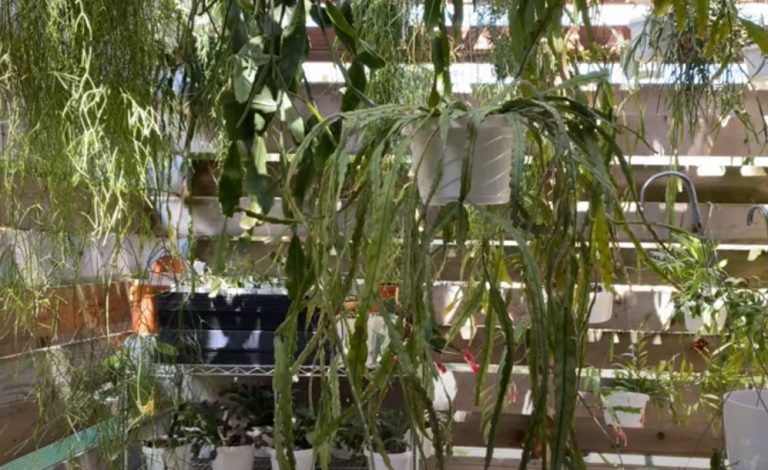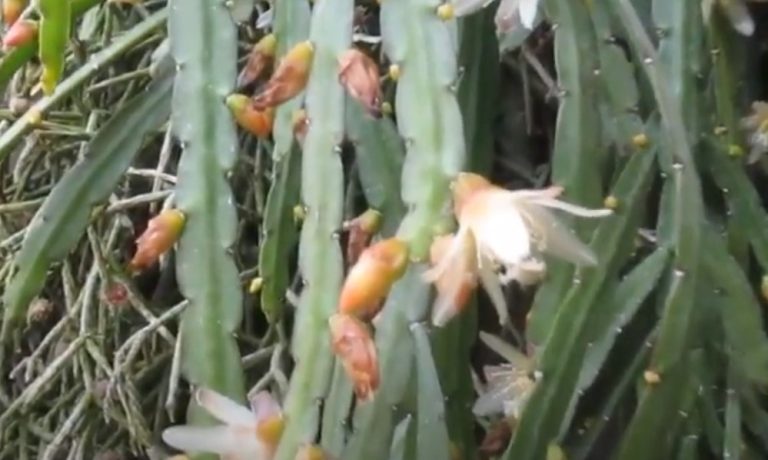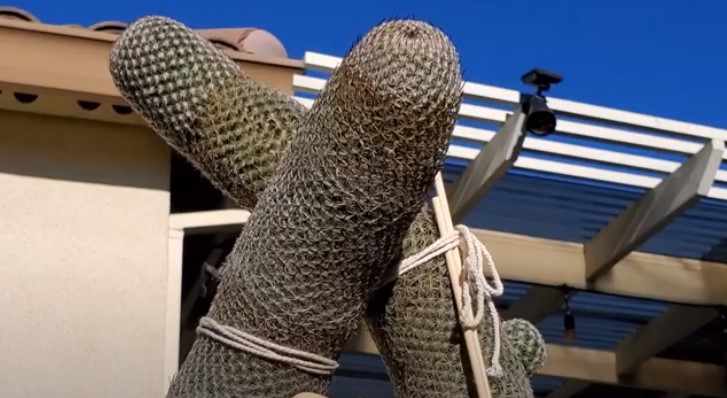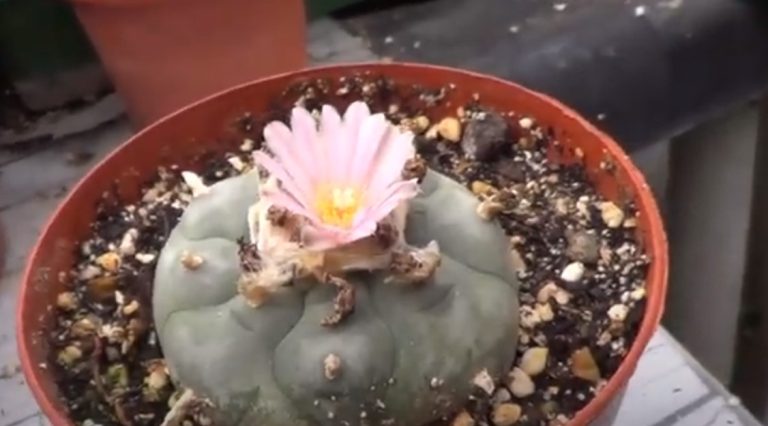Unveiling the Charm of Rhipsalis Clavata: A Unique Guide to Care and Cultivation

The world of cacti is known for its intriguing diversity, and among the fascinating members of this family is the Rhipsalis Clavata. This unique cactus stands out with its distinct physical characteristics and captivating growth patterns. In this article, we will delve into the various aspects of Rhipsalis Clavata, from its native habitat to its significance in horticulture.
Overview of Rhipsalis Clavata as a Unique Cactus
Rhipsalis Clavata, the Mistletoe Cactus, is a unique plant. Unlike the ordinary image that comes to mind when one thinks of a cactus, Rhipsalis Clavata features long, pendulous stems adorned with delicate, fern-like foliage. Its slender appearance adds a touch of elegance to any collection of succulent plants, making it a standout choice for cactus enthusiasts.
Native Habitat and Geographic Distribution
Rhipsalis Clavata is indigenous to the tropical regions of South America, particularly Brazil and Argentina. It thrives in the lush forest canopies, where it has adapted to grow as an epiphyte, attaching itself to tree branches and trunks. This unique adaptation sets Rhipsalis Clavata apart from most cacti, which typically grow in arid desert environments.
Physical Description and Unique Characteristics of Rhipsalis Clavata
Rhipsalis Clavata exhibits slender, cylindrical stems that can grow up to 2 feet (60 centimeters) in length. These stems are segmented and covered in small, elongated leaves, giving them a delightful fern-like appearance. When grown in hanging baskets or mounted on vertical surfaces, the stems hang gracefully, creating an eye-catching cascading effect. The delicate foliage of Rhipsalis Clavata adds an ethereal touch to any setting, making it a perfect choice for those searching for a softer, more natural aesthetic in their indoor or outdoor spaces.
Significance of Rhipsalis Clavata in Horticulture
Rhipsalis Clavata holds great significance in horticulture, particularly among cactus enthusiasts. Its unique growth habit and enchanting foliage make it a beloved addition to diverse plant collections. The Mistletoe Cactus is highly sought after for its versatility, as it can thrive indoors and outdoors. Additionally, its adaptation to lower light levels in its native habitat makes it a remarkable choice for those seeking a resilient and low-maintenance houseplant.
Understanding the Growth Requirements of Rhipsalis Clavata
To ensure the good growth and health of Rhipsalis Clavata, it is essential to understand its growth requirements. Let’s explore the ideal temperature and climate conditions, sunlight needs, watering and soil conditions, and fertilization and propagation techniques for this captivating cactus.
Ideal Temperature and Climate Conditions for Rhipsalis Clavata
Rhipsalis Clavata flourishes in warm and humid environments, making it well-suited for tropical and subtropical regions. Ideally, a temperature range of about (60° to 80°)F t or (15°C to 27°C) is conducive to its growth. It is important to avoid exposing this cactus to temperatures below 50°F (10°C), as it may suffer from damage or stunted growth.
Sunlight Requirements and Indoor Growing Tips
While Rhipsalis Clavata prefers bright, indirect light, it can also adapt to lower light conditions, making it an excellent choice for indoor cultivation. Placing it near a north-facing window or providing filtered sunlight ensures that it receives adequate light without exposure to direct sun rays, which can scorch its delicate leaves. It is best to provide a shaded spot that receives filtered light throughout the day if grown outdoors.
Watering and Soil Conditions for Optimal Growth
One key aspect of successfully growing Rhipsalis Clavata is getting the watering and soil conditions right. As an epiphytic cactus, it naturally thrives in well-draining soil that mimics its forest floor habitat. A recommended potting mix consists of a combination of regular potting soil, perlite, and orchid bark. Waiting until the soil dries out between waterings is crucial to prevent root rot. Aim to keep the soil frequently moist but never soggy.
Fertilization and Propagation Techniques
To promote the best growth and vibrant foliage, it is beneficial to fertilize Rhipsalis Clavata during the growing season, typically spring and summer. A balanced, water-dissolved fertilizer diluted to half its strength can be applied monthly. Avoid fertilizing during the winter months, as the cactus enters a period of dormancy. Propagation of Rhipsalis Clavata can be achieved through stem cuttings. Take a section of stem, allow it to callus over for a few days, and plant it in moist soil. The cutting will develop roots and establish itself as a new plant with proper care.
Exploring the Fascinating Life Cycle of Rhipsalis Clavata

Delving into the life cycle of Rhipsalis Clavata reveals a captivating journey from seed to maturity. Understanding its growth stages, blooming period, reproduction, and life expectancy allows us to appreciate this cactus more deeply.
Germination and Early Growth Stages of Rhipsalis Clavata
The life cycle of Rhipsalis Clavata begins with the germination of its tiny seeds. Under optimal conditions, these seeds sprout within a few weeks, developing into delicate seedlings. As the seedlings grow, they produce the characteristic segmented stems and develop fern-like foliage. This early growth stage is crucial for establishing a strong foundation for future growth and blooming.
Maturation Process and Blooming Period
As Rhipsalis Clavata matures, its stems elongate and become more pendulous, creating the iconic cascading effect. The blooming period typically occurs in late winter to early spring when clusters of small white flowers appear from the tips of the stems. These delicate blooms add a touch of elegance to the already stunning appearance of the cactus.
Reproduction and Fruit Development

During the blooming period, Rhipsalis Clavata undergoes pollination by various insects, such as bees and butterflies, attracted to its sweet nectar. After successful pollination, small fruits begin to develop. Although not particularly showy, these fruits contain multiple seeds and play a crucial role in the propagation of the species.
Life Expectancy and Factors Influencing Growth
Rhipsalis Clavata can have a relatively long life expectancy, with some individuals living up to 20 years or more. However, the lifespan of this cactus is influenced by various factors, such as the quality of care provided, environmental conditions, and the plant’s overall health. With proper care and attention, your Rhipsalis Clavata can thrive and bring beauty to your conduct for many years.
Maintenance and Care Tips for Rhipsalis Clavata
Caring for Rhipsalis Clavata involves adopting a proactive approach to its maintenance. Understand the importance of pruning and trimming techniques, protecting the cactus from common pests and diseases, maintaining proper watering and drainage, and ensuring the right humidity levels for optimal growth.
Pruning and Trimming Techniques to Promote Health
Regular pruning and trimming can help maintain the health and aesthetic appeal of Rhipsalis Clavata. As the stems grow, they may become overly long or lose vitality. By selectively cutting back these stems, you can encourage new growth and remain the plant compact and tidy. Additionally, removing any dead or diseased portions of the cactus helps prevent the spread of pests or diseases.
Protecting Rhipsalis Clavata from Common Pests and Diseases
Despite its resilience, Rhipsalis Clavata can still be susceptible to certain pests and diseases. Mealybugs and spider mites are frequent visitors to this cactus, often attacking the foliage and stems. You may prevent these pests by routinely checking your plant for indications of infestation and treating it with organic pest management techniques as soon as possible. Additionally, since overwatering can result in fungal illnesses and root rot, it’s crucial to avoid it.
Understanding the Importance of Proper Watering and Drainage
For Rhipsalis Clavata to remain healthy, proper watering is essential. As much as it loves consistent moisture, it’s just as crucial to let the soil dry out a little in between waterings. In addition to other issues, root rot can result from overwatering. It’s also crucial to make sure there is enough drainage. Use well-draining potting mix and pots with drainage holes to save water from building up around the roots.
Maintaining the Right Humidity Levels for Rhipsalis Clavata
Rhipsalis Clavata thrives in humid environments, much like its natural habitat. While it can adapt to lower humidity levels, a humid environment promotes optimal growth and prevents dehydration. Misting the foliage with water or placing a humidifier nearby can help accomplish this. Another effective method is creating a pebble tray by placing a layer of water and pebbles in a shallow tray, with the pot above the water line.
Embracing Rhipsalis Clavata in Interior Design and Landscaping

The unique beauty and adaptability of Rhipsalis Clavata have made it a beloved choice for incorporating into interior design and landscaping projects. Let’s explore various creative ways to embrace this stunning cactus, from using it as a hanging plant to integrating it into vertical gardens, terrariums, and botanical displays.
Utilizing Rhipsalis Clavata as a Stunning Hanging Plant
Rhipsalis Clavata’s pendulous stems lend themselves perfectly to hanging displays. Placing it in a macramé hanger, a decorative pot with cascading vines, or even a hanging terrarium allows it to showcase its graceful form. Its delicate foliage cascading downwards creates a captivating visual effect that adds a touch of nature to any room or outdoor space.
Incorporating Rhipsalis Clavata in Vertical Gardens and Green Walls
Vertical gardens and green walls offer an excellent solution for those with limited floor space. Rhipsalis Clavata can be grown vertically attached to vertical surfaces such as metal grids or trellises, creating a living work of art. Its cascading stems bring texture and movement to vertical gardens, transforming a plain wall into a lush and vibrant oasis.
Rhipsalis Clavata as a Striking Accent in Terrariums and Botanical Displays
Terrariums and botanical displays allow the creation of miniature ecosystems, incorporating Rhipsalis Clavata as a striking accent plant. The cascading stems add a three-dimensional element, layering beautifully against other plants and decorative elements. Placing it alongside moss, rocks, or small figurines can further increase the aesthetic appeal of the display.
Pairing Rhipsalis Clavata with Complementary Plants and Décor Elements
Consider pairing Rhipsalis Clavata with complementary plants and décor elements to create visually appealing compositions. Its delicate, fern-like foliage contrasts beautifully with succulents boasting fleshy architectural leaves. Incorporating decorative stones, driftwood, or colorful planters can elevate the overall aesthetic and create a cohesive and visually striking arrangement.
Uses
Rhipsalis Clavata finds extensive use in ornamental settings thanks to its unique and elegant appearance. It adds a bit of natural beauty to homes, offices, and public spaces, brightening up any environment it is placed in. The cascading stems and delicate foliage of the Mistletoe Cactus make it a favorite choice for floral arrangements and bouquets, bringing a unique and enchanting charm to any floral design.
Conservation and Threats to Rhipsalis Clavata
In recent years, the conservation status of Rhipsalis Clavata has raised concerns due to habitat destruction and collection for horticultural purposes. Destruction of its natural habitat, especially the deforestation of tropical forests, poses a significant threat to the species. Efforts towards conservation and sustainable cultivation practices are crucial to ensure this unique cactus’s survival for future generations to admire and appreciate.
Summary
Key Points Discussed in the Article
In conclusion, Rhipsalis Clavata is a captivating cactus with its slender, pendulous stems and delicate, fern-like foliage. It thrives in warm and moist temperatures, making it suitable for tropical and subtropical regions. Understanding its growth requirements, from temperature and sunlight needs to watering and soil conditions, is vital for optimal growth. The life cycle of Rhipsalis Clavata entails germination, maturation, blooming, reproduction, and a lifespan influenced by various factors. Proper care includes:
- Pruning.
- Protecting against pests and diseases.
- Maintaining watering and drainage.
- Ensuring the right humidity levels.
Its unique beauty makes it a versatile plant, perfect for incorporating into various interior design and landscaping projects.
Frequently Asked Questions about Rhipsalis Clavata
1. How often should I water my Rhipsalis Clavata?
Watering frequency can vary depending on environmental conditions, but as a general rule, aim to water Rhipsalis Clavata when the soil’s top inch (2.5 centimeters) feels slightly dry. It’s better to go underwater than overwater, as this cactus is sensitive to root rot.
2. Can Rhipsalis Clavata tolerate low-light conditions?
Yes, Rhipsalis Clavata can tolerate lower light conditions than many other cacti. While it favors bright, indirect light, it can adapt to lower light levels. Placing it near a north-facing window or providing filtered sunlight is ideal.
3. What are some common signs of distress in Rhipsalis Clavata?
Common signs of distress in Rhipsalis Clavata include yellowing or wilting foliage, soft and mushy stems, and an overall lack of growth. These symptoms may indicate overwatering, pests, or insufficient light.
Final Thoughts on the Charm and Beauty of Rhipsalis Clavata
Rhipsalis Clavata offers a unique combination of elegance, adaptability, and natural beauty. Whether displayed as a hanging plant, incorporated into vertical gardens, or used as a focal point in terrariums and displays, this captivating cactus adds a touch of enchantment to any space. By understanding and providing proper care, you can enjoy the graceful presence of Rhipsalis Clavata and watch it thrive, bringing the charm of the forest canopies into your home or garden.




